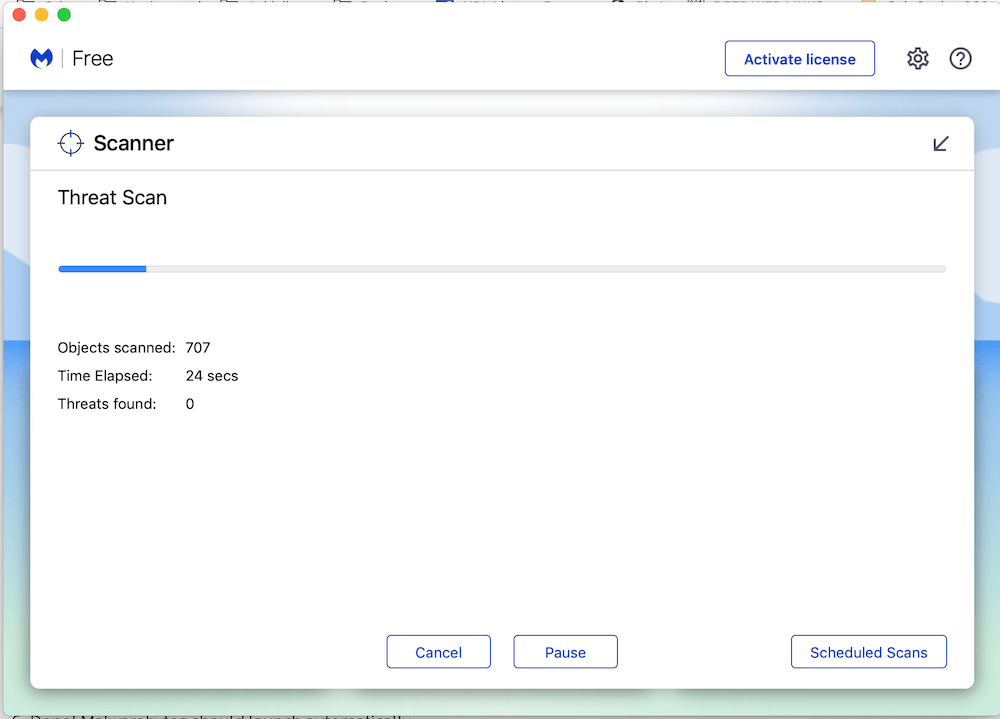
- #Mailwarebytes for mac update#
- #Mailwarebytes for mac software#
- #Mailwarebytes for mac mac#
- #Mailwarebytes for mac windows#
#Mailwarebytes for mac mac#
I was surprised how many Mac users responding to my unscientific Twitter poll have no antimalware. Hardcore malware was only a small fraction of what was seen last year adware, which subjected users to intrusive ads, and potentially unwanted programs (PUPs), which are unnecessary apps that are bundled with other software, made up the bulk of incidents in Malwarebytes’ 2020 report. The data was collected during 2020, and while it shows a 37% dip in the prevalence of Mac malware compared to the previous year – in which the pace of Mac malware outran that of Windows – the worst category of malware jumped by 61% in 2020.īut there is some good news.
#Mailwarebytes for mac software#
Apple didn’t respond to a request for quantification of their executive’s revelation.īut for evidence, take a look at the 2021 State of Malware, this year’s release of an annual report produced by Malwarebytes, which makes security software for Windows, Mac, Android, iOS and Chrome OS.
#Mailwarebytes for mac windows#
The creators of malware are porting their Windows malware to the Mac.”Īpple, which is the only entity that would really have the big picture on Mac malware, doesn’t talk about it. “What’s interesting is that half the malware samples targeting Macs are samples that worked before on Windows. “There are millions more Mac users now, so hackers are targeting Macs more,” Wardle said. Like what you see? Sign up for my Release Notes newsletter, bringing you consumer tech insights, help and practical tips. But the bottom line is that there’s a lot more malware aimed at Macs than there used to be, and it’s growing more sophisticated.
#Mailwarebytes for mac update#
The macOS 11.4 update released Monday fixes the issue, and if you're a Mac user who has not updated yet, you should do so right away.Īpple and its fans will say that the macOS’ architecture makes it more difficult for malware to take hold on a Mac. There are indications the bug is being exploited now. On Monday, Forbes cybersecurity writer Thomas Brewster reported on a flaw in macOS Big Sur that could allow hackers to bypass Apple's own antimalware features. Wardle said that some of that has to do with the historically smaller installed base of Mac systems Windows is a bigger and thus a more lucrative target. What is more correct to say is that there is a lot more malware in the world targeting Windows PCs than Macs. Technically proficient users of Apple’s computers have known this for a long time. That Macs are not immune to malware is not really news. He described Apple’s past marketing messages that “Macs don’t get malware” as being “very dishonest.” “The problem is worse than the majority of people realize,” Wardle said.

See Open an app by overriding security settings.Pretty bad, according to Patrick Wardle, an independent security researcher who specializes in macOS and is the author of a book called “ The Art of Mac Malware.” He also develops a line of free, open-source security tools called Objective-See. An alert appears when you first try to open these files.

Of course, not all files like this are unsafe, but you should exercise caution when opening any such downloaded file. Scripts, web archives, and Java archives have the potential to cause harm to your system. In addition to apps, other types of files may not be safe. macOS checks the app before it opens the first time to be certain it hasn’t been modified since the developer shipped it. If problems occur with an app, Apple can revoke its authorization. Identified developers are registered with Apple and can optionally upload their apps to Apple for a security check.

If there’s ever a problem with an app, Apple removes it from the Mac App Store.Īpp Store and identified developers: Allows apps from the Mac App Store and apps from identified developers. All the developers of apps in the Mac App Store are identified by Apple, and each app is reviewed before it’s accepted. Select the sources from which you’ll allow software to be installed:Īpp Store: Allows apps only from the Mac App Store. If the lock at the bottom left is locked, click it to unlock the preference pane. On your Mac, choose Apple menu > System Preferences, click Security & Privacy, then click General.


 0 kommentar(er)
0 kommentar(er)
